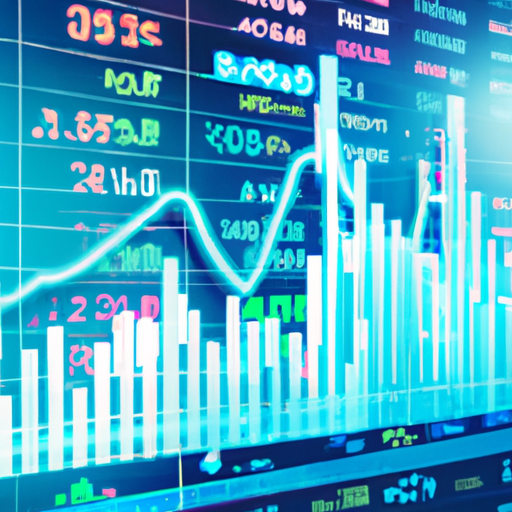Exploring The World Of Trading Platforms
Trading platforms have revolutionized the way we invest and manage our finances.
From high-frequency trading to intricate trading strategies, having the right platform can make all the difference.
Whether you’re a seasoned trader or just dipping your toes into the financial markets, understanding how these platforms work is crucial.
Let’s dive into the fascinating world of trading platforms and uncover what makes them tick.
What Are Trading Platforms?
Trading platforms are software systems that allow investors to trade securities, commodities, and other financial instruments online.
These platforms provide tools for research, placing orders, and managing investment portfolios.
They are essential for anyone looking to participate in modern-day trading.
The best trading platform offers an intuitive interface, real-time data, and robust security measures to protect user information.
In addition, they often include educational resources to help users make informed decisions.
Types Of Trading Platforms
There are various types of trading platforms catering to different needs and preferences:
1. Web-Based Platforms: Accessible through a browser without requiring any software installation.
2. Desktop Applications: Installed on a personal computer for more advanced features and customization.
3. Mobile Apps: Allow traders to manage their investments on-the-go with ease.
Each type has its pros and cons, so it’s essential to choose one that aligns with your trading style and requirements.
For example, a high-frequency trader might prefer a desktop application for its speed and precision.
Features To Look For In A Trading Platform
When selecting a trading platform, certain features can significantly enhance your trading experience:
1. User-Friendly Interface: A clean design that makes navigation easy ensures you won’t waste time trying to figure out how things work.
2. Real-Time Data: Access to up-to-the-minute information helps in making timely decisions.
3. Analytical Tools: Advanced charting tools and indicators assist in developing effective trading strategies.
4. Security Measures: Strong encryption protocols protect your personal information from cyber threats.
5. Customer Support: Reliable support can be invaluable when you encounter issues or need assistance.
Choosing the best trading platform involves assessing these features against your specific needs.
The Role Of High-Frequency Trading
High-frequency trading (HFT) is a form of algorithmic trading that executes numerous orders at extremely high speeds.
HFT relies heavily on sophisticated trading systems capable of processing vast amounts of data in milliseconds.
To participate in HFT effectively, you need a platform that supports rapid order execution and has minimal latency.
Such platforms often come with hefty costs but offer substantial rewards for those who can leverage their capabilities successfully.
Many traders opt for specialized HFT platforms designed specifically for this purpose.
Importance Of Risk Management
Risk management is an integral aspect of successful trading on any platform.
A good trading platform provides built-in risk management tools such as stop-loss orders and alerts for price changes.
These features help mitigate potential losses by allowing traders to set predefined limits on their trades.
Effective risk management involves diversifying investments across various asset classes rather than putting all eggs in one basket.
For instance, spreading investments between stocks, bonds, commodities reduces exposure if one sector underperforms.
Having access to comprehensive risk management tools should be non-negotiable when choosing your preferred trading system.
Developing Effective Trading Strategies
Trading strategies are essential blueprints guiding every decision made within the market arena.
The best strategy varies depending on individual goals; however certain core principles remain universally applicable:
1) Research: Conduct thorough analysis before entering trades based purely speculative moves often result losses.
Technical analysis fundamental research both play crucial roles understanding market dynamics accurately predicting future trends.
Most top-tier platforms offer extensive libraries resources aiding this phase immensely empowering users develop sound strategies confidently execute them accordingly.
Testing: Once developed testing new strategy critical ensure its viability real-world conditions without risking actual capital initially
Backtesting using historical market data allows identifying weaknesses areas improvement thereby refining approach further maximizing chances success eventually
Execution: Finally implementation phase where theoretical plan put into action monitored closely adjustments made necessary based evolving market conditions feedback received during process.
Combining solid research rigorous testing disciplined execution forms backbone reliable long-term profitable strategy irrespective level expertise experience.
The Future Of Trading Platforms
As technology continues evolve rapidly future holds exciting prospects evolution development even more sophisticated feature-rich user-friendly innovative solutions tailored meet diverse demands global investor community.
Artificial Intelligence (AI) machine learning expected play significant roles enhancing predictive analytics automating routine tasks improving overall efficiency accuracy operations tremendously.
Blockchain technology also poised disrupt traditional models offering transparent secure decentralized alternatives transforming landscape permanently potentially lowering transaction costs increasing accessibility previously underserved populations globally.
In conclusion world dynamic ever-evolving staying abreast latest advancements trends critical maintaining competitive edge achieving sustained success leveraging full potential powerful modern-day tools effectively efficiently consistently.

